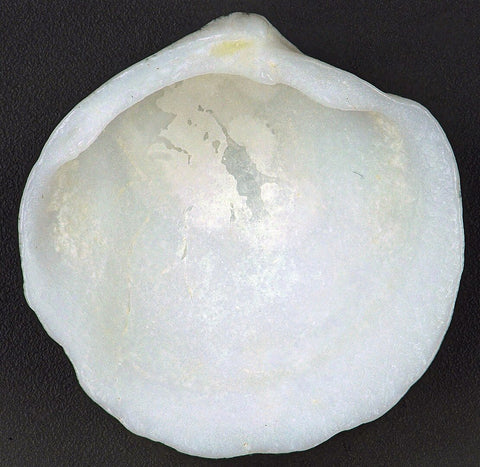
The Atlantic Lucine, known scientifically as Lucina pensylvanica, is a fascinating bivalve mollusc found along the Atlantic coast of North America. This species plays a significant role in its ecosystem as both a habitat builder and a food source for various marine creatures. Recognizable by its circular shell and distinct growth lines, the Atlantic Lucine blends seamlessly into the sandy and muddy bottoms where it thrives. These molluscs are not just important ecologically; they also have cultural and economic significance. Communities have engaged in creative crafts using their shells, showcasing their unique beauty while promoting local traditions. Understanding the distribution and habitat of Lucina pensylvanica can lead to better conservation efforts and a deeper appreciation of marine biodiversity. In this blog post, readers will explore the characteristics that set the Atlantic Lucine apart, its natural environment, and the ways it connects to local culture and economy. The journey through the world of Lucina pensylvanica promises to unveil a wealth of knowledge about this remarkable species.
Key Takeaways
- The Atlantic Lucine is crucial for marine ecosystems.
- Its shells are used in local crafts and hold cultural value.
- Understanding its habitat aids in conservation efforts.
Identification Guide
The Atlantic Lucine, or Lucina pensylvanica, has distinct features that make it easier to identify. Key characteristics include its size, shape, and unique markings. Understanding how to differentiate it from similar species is essential for accurate identification.How to Identify an Atlantic Lucine
To identify an Atlantic Lucine, one should first observe its shell. The shell is typically circular and tends to reach a size of about 50 mm (2 inches) in diameter. The exterior usually appears whitish, sometimes with light brown shades. Notably, the shell has pronounced growth lines that run horizontally across it. A strong groove can be found on the posterior side, making it easily recognizable.Characteristics
The Atlantic Lucine has several noteworthy characteristics. Its shell is nearly symmetrical and smooth with irregular growth lines. These lines, known as commarginal lines, give the shell a unique texture. The posterior groove is deep and distinct, providing a clear marker for identification. The interior of the shell is often lighter, which contrasts with the exterior and enhances visibility. Weight can also be a factor; the Atlantic Lucine tends to feel solid for its size, which indicates a healthy specimen. Observing these features can help enthusiasts and researchers identify the species confidently.Comparison to Similar Species
When comparing the Atlantic Lucine to similar bivalves, a few key differences can be noted. For instance, the *Katelysia species have a more elongated shape, while Lucina pensylvanica remains circular. Additionally, many other bivalves lack the strong posterior groove that characterizes the Atlantic Lucine. Another common species, Mya arenaria, has a more elongated shell and different color patterns. Paying close attention to the shell shape, size, and growth lines will assist in distinguishing the Atlantic Lucine from these similar species. Using a field guide can also support identification efforts.Distribution & Habitat
The Atlantic Lucine, or Lucina pensylvanica, has a specific range along the Atlantic coast of North America. This species thrives in sandy and muddy habitats, often found within shallow waters.Where to Find Atlantic Lucine
The Atlantic Lucine is typically found from North Carolina to the West Indies. It prefers environments like coastal lagoons and estuaries. This bivalve mollusc is commonly located at depths ranging from 0 to 28 meters. The substrate where they live usually includes sand or mud, which provides shelter and food. Their habitat is crucial for maintaining local ecosystems, supporting various marine life.Cultural & Economic Importance
The Atlantic Lucine, or Lucina pensylvanica, holds a special place in local cultures and economies. It has both historical significance and practical uses that impact communities along the Atlantic coast.The Atlantic Lucine in Culture
The Atlantic Lucine has cultural significance in various coastal communities. Its shell has been used by Indigenous peoples for craftsmanship and decoration. Handmade jewelry and art pieces often feature these shells, showcasing their beauty and uniqueness. Additionally, the species represents local biodiversity and environmental health. Educational programs highlight its role in coastal ecosystems, helping communities understand their natural heritage. Local festivals sometimes celebrate this bivalve, connecting people to their marine environment.Legal Status
The Atlantic Lucine is not listed as threatened or endangered. Its populations are generally stable within their natural habitat, which ranges from North Carolina to the West Indies. However, local regulations may oversee harvesting to protect marine life. Fisheries and environmental groups monitor the species to ensure sustainable practices. This attention supports both local economies and conservation efforts. Maintaining its population helps protect the health of coastal ecosystems, which benefits various industries, including tourism and fishing.Atlantic Lucine Crafting
The Atlantic lucine, or Lucina pensylvanica, offers unique crafting opportunities due to its distinctive shell characteristics. These shells are typically circular and can reach up to 50 mm in size.Uses in Crafting
-
Jewelry Making
The smooth and shiny surface makes these shells ideal for necklaces, earrings, and bracelets. They can be drilled carefully for stringing. -
Decorative Art
Artists can incorporate Atlantic lucine shells in various crafts, such as mosaics or home decor items. Their natural colors can add a coastal theme to any project. -
Educational Tools
Schools often use these shells for teaching purposes. They make excellent specimens for biology and marine life studies.
Care and Preservation
- Cleaning: It is important to clean the shells gently with soap and water. Avoid harsh chemicals to maintain their natural beauty.
- Storage: Store them in a cool, dry place away from direct sunlight to prevent discoloration.






















